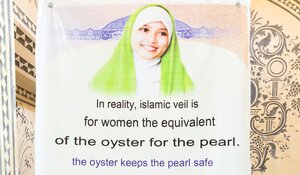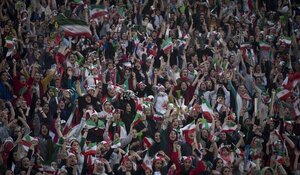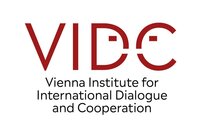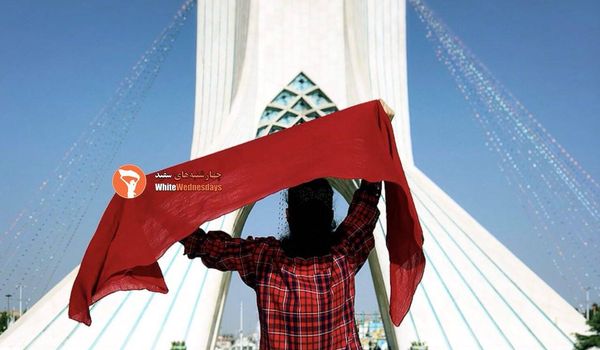The #MeToo movement emerged in 2017 in the social media all around the world. Just like in Europe and the Americas, it was not warmly welcomed at beginning in some Muslim countries. However, the internet and social media have been the main instrument for Muslim women to talk freely and anonymously about their experiences of sexual abuse and the inequality they face every day.
In recent years, there have been numerous media-based movements in Iran, initiated by women, to regain the rights they have lost after the 1979 revolution and to reach equal rights with men in all matters. They protest against forced veiling (Hijab) under the campaign "Women's Stealthy Freedoms in Iran", or "White Wednesdays", when women wear a white scarf showing willingness to have a peaceful discussion about their rights with religious authorities. Both movements set off widespread protests by Iranian women against the gender policies in post-revolutionary Iran, and both emerged through social networks like Instagram.
Discussing women’s issues has been a taboo in many Muslim societies, especially when it comes to sexual harassment. The deep-rooted religious beliefs in most cases point the finger towards victims, blaming them for inciting men through their cloths or behaviors to commit such “sins”. After the Islamic Revolution in Iran, the clergy sought to marginalize Iranian women, to confine them to the home, and to strengthen religious ideas and discourses that would revert back all the progress made under the last Shah on women’s rights. To achieve this, the regime has pursued the policy of presenting Fatemeh, the daughter of the Prophet Mohammad and the wife of Imam Ali (the first Shiite Imam) as a devoted wife and mother. Thereby the regime is imposing a reactionary definition of the ideal woman and implies that women should follow Fatemeh in all their conducts. One aspect of this definition, the decency of Fatemeh, has manifested itself in the separation of men and women in educational spaces.
Four decades of silence and subordination

Even in 2020, many Muslim women still feel insecure of talking about their experiences with sexual abuse. One reason behind this secrecy is the paralyzing fear among women of being accused of indecency. These women know, through experience, that the society and the legal system will most likely designate the female victims themselves as the culprit, rather than punishing men who committed the crime. The absence of effective legal and social protection prevents the victims from pursuing litigation. Further, the lack of family support due to fear of losing the family’s reputation, forces women to not taking any action against the perpetuators of the sexual assault. In most cases, victims bear the psychological consequences of the assault in silence for the rest of their lives.
This trend has been strategically reinforced by the constant promotion of women as second-degree citizens in the post-revolutionary educational programs and in government-controlled media with the aim of subjugating women into submissive mothers, wives, and caretakers for men. Women have been portrayed in national media as emotional, gullible, weak, and always in need of constant care by men. The indoctrination of these images has been reinforced by a totally different educational pattern for men, such as fostering a sense of self-superiority among boys, and an intentional absence of appropriate gender and sexual education in single-sex schools. It has resulted in an accumulation of destructive, unsatisfied desires to discover the female body among boys, and a sense of impunity and even entitlement to often deal with their sexual desires towards women through physical violence or psychological coercion. The prevalence of the Internet and widespread exposure to pornography from an early age has only exacerbated these unhealthy behavioral patterns among many Iranian men.
This deeply conflicting pattern of behavior is unfortunately too common among a new generation of educated men in Iran who were brought up after the Revolution of 1979. Many among these men struggle constantly to digest traditional gender roles promoted by a reactionary regime, and gender equality ideas coming from the liberal West. The intentional intensification of gender separation and subordinating policies against women has left many young men confused about sexuality and consent. Many young educated men in Iran feel free to encourage or coerce women into sexual relationships, rationalizing their predatory behavior under the disguise of sexual freedom, and at the same time preaching the importance of decency and virginity to women close to them. As widespread this hypocrisy is among men, women have found a way to expose and fight it.
Social media empowers women

For many women around the world, social media can be an effective tool for exposing and countering the inequalities and assaults against women. In Iran, in recent years, the level of women's socio-political activism on social media increased significantly. Grassroot organizations have initiated several campaigns for raising public awareness on discrimination and violence against women. Since the government started to severely restrict access to social media in 2009, Iranian women have turned in numbers to Instagram, the only major social media platform still open. Given the important role Instagram plays in marketing for local economy, it remains accessible, but this could change as next presidential elections are scheduled for next year.
Instagram has particularly been able to provide a fertile ground for changing the socially constructed gender structures in Iran. The active presence of Iranian women on Instagram has put the Islamic republic of Iran under (international) pressure to change some of its discriminating laws against women. In 2019, women were allowed into football stadiums for the first time after the Islamic Revolution - albeit in an extremely limited capacity and in segregated tiers - as a result of widespread protests on social media. Images and hashtags have propelled women’s rights to the forefront of the socio-political agenda in Iran, even offering an opportunity to develop a new identity for women by women. Even though the regime hits back hard at these activities to make it as risky as possible for activists to operate, the scope of these movements has not been limited to fighting obligatory Hijab or exposing sexual violence. Rather, women have used Instagram and Twitter to demonstrate their protests about any concern they have. These efforts have led to a widespread believe in the power and effectiveness of social campaigns, reflected in one popular campaign motto: "our camera, our weapon!"
Social networks create a space where women can develop a collective understanding of issues affecting their lives. Even though most of the women in Iran still do not feel safe to reveal their identities and recount their stories online, the growing importance of social networks is evident. Moreover, there is an optimistic feeling that recent events could be the starting point for facilitating positive change regarding the situation of women in Iran. Since government started to severely restrict access to social media, Iranian women has turned in numbers to Instagram, the only major social media platform still open. Given the important role Instagram plays in marketing for local economy, it is accessible, but this could change as next presidential election comes next year (18 November 2020).

